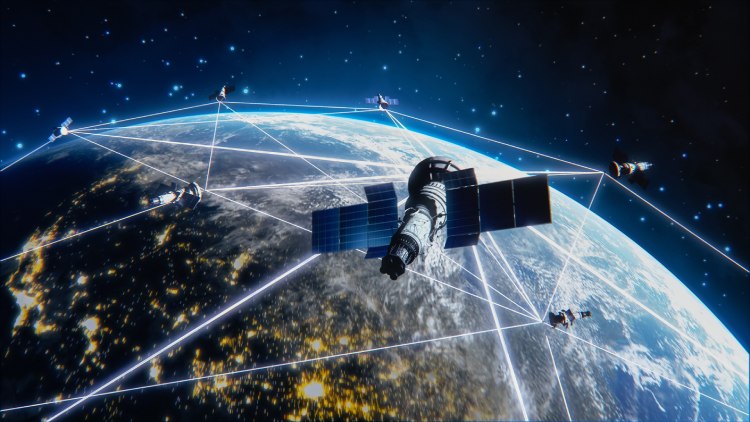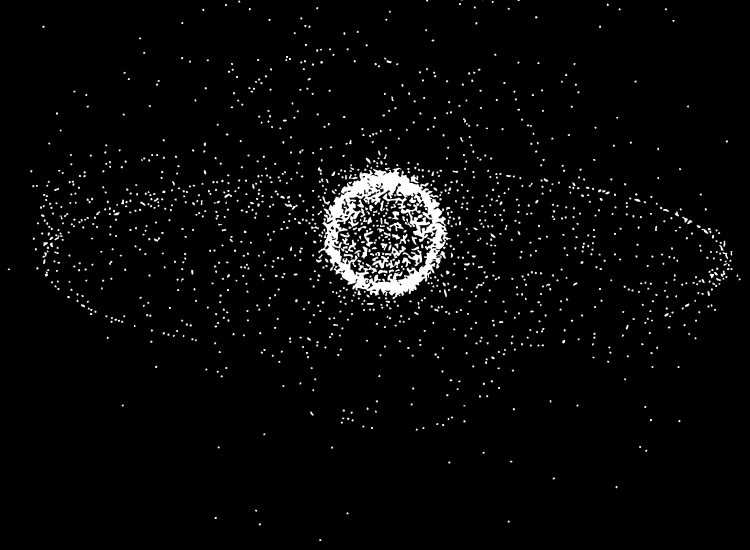What is Kessler Syndrome? Understanding the Issue of Space Debris

In a list of humanity’s greatest achievements, space exploration would easily be right at the top. Ever since the launch of the Sputnik satellite in 1957, humans have launched about 12,170 satellites into Earth’s orbit. Earth now has 7,630 satellites in orbit, with 4,700 still operational. However, with many more missions planned, the space around Earth could get far more cluttered than it is now. Without curtailing the build-up of space debris close to Earth, we may feed into a feedback loop known as the “Kessler Syndrome.” Let’s understand how this phenomenon could affect our present and future satellite networks.
The Kessler Syndrome is created by man-made clutter in Earth’s orbit
Named after former NASA scientist Donald Kessler, the Kessler Syndrome may already be in effect. In his paper titled Collision Frequency of Artificial Satellites: The Creation of a Debris Belt, Donald Kessler and co-author Burton Cour-Palais stated that the likelihood of satellite collisions increases as greater numbers of spacecraft are lifted into the orbital environment. These collisions create space debris, which increases the potential of future collisions.
The Kessler Syndrome is a description and a warning of a cascade of space debris orbiting the Earth. There are currently over 3,000 defunct satellites orbiting the Earth at tremendous speeds, along with other debris, such as upper-stage rocket bodies. To put into perspective just how fast this debris can move, the International Space Station travels at an astonishing speed of 17,100 mph (27,500 kph). This allows the ISS to orbit the Earth in just 90 minutes!
With debris crashing into each other at such high speeds, the Kessler Syndrome could become a self-sustaining cycle. It would resemble a domino effect in space, with the dominos being our satellites.
This phenomenon could affect present and future space travel and satellite missions

The European Space Agency estimates there are 36,500 debris objects that are more than 4 inches (10 centimeters) wide, 1 million between 0.4 inches and 4 inches (1 to 10 cm) across, and 330 million that are smaller than 0.4 inches (1 cm) but bigger than 0.04 inches (1 millimeter) currently in Earth’s orbit. All these pieces are whizzing by at astronomical speeds and completely random trajectories. It’s not uncommon for them to smash into satellites around Earth.
From 1999 to 2021, the ISS has conducted 29 debris-removing maneuvers, and that number is continuing to grow. Defunct satellites in orbit also act as sources of more debris that can add to this chain reaction. While the cascade of debris would occur over a period, it poses a significant threat to our active satellite network and future space missions.
With much of our communication, navigation, and observational abilities relying on satellites, damage to these instruments could hamper our everyday lives. With enough debris in orbit, humans may have to say goodbye to services such as GPS, surveillance, and air traffic control! A constant stream of debris would also interfere with potential space missions, as researchers would need to account for random projectiles that may damage spacecraft.
Is there a way to mitigate the effects of the Kessler Syndrome?

The only way to reduce the risk of the Kessler Syndrome, according to Donald Kessler himself, is to significantly reduce the accumulation rate of non-operational objects in Earth’s orbit. With companies such as SpaceX, Amazon, and OneWeb planning to create massive satellite networks, the threat of cosmic debris is being taken seriously in the space community.
The Space Safety Coalition (SSC) laid out a set of voluntary guidelines in 2019 called “Best Practices for the Sustainability of Space Operations” to curb the creation of the Kessler Syndrome over the coming years. The European Space Agency has launched the Clean Space initiative, and it finalized the Zero Debris Charter this year. While still in its early stages, these projects are working toward creating a safer future for space travel and exploration. With a comprehensive and focused strategy, we could reduce the effects of the Kessler Syndrome for many, many years!
























